Millennials’ Obsession with Cosmetic “tweaks” and Injectable Fillers like Botox

The percentage of Gen Zers who choose to have cosmetic surgery is at an all-time high.
As minimally invasive procedures like Botox injections, chemical peels, and microneedling become more popular, more people under 30 are coming in for them.
The “Zoom Boom,” which has been blamed in part on the pandemic, may also explain this increase. In 2021, after many people had been looking at themselves on Zoom for months, they decided they didn’t like what they saw, and there was a sudden surge in the demand for cosmetic surgery across the country. This surge became known as the Zoom Boom.
It is believed that the widespread adoption of Zoom for classes, work, and socializing may have contributed to a general decline in confidence during the pandemic.
People’s interest in “tweaks” to their appearance, such as plastic surgery and the like, persisted even after they returned to the workplace.

Gen Zers are more likely than ever to choose to undergo cosmetic surgery.
Many people continued to feel the effects of the “Zoom Boom” in the year 2022, with approximately 80% of them attributing their decision to seek treatment in large part to the “Zoom Effect.”
During the pandemic, individuals who desired to experiment with cosmetic surgery also benefited from the rise in disposable income that took place during this time period.
Body dysmorphic disorder, in which a person becomes preoccupied with a perceived physical defect and allows it to negatively impact their daily lives, is something I keep an eye out for in younger patients.
It has a devastating effect on them. And you really need to watch out for that, because that’s more of a psychological problem. In these situations, cosmetic procedures may prove beneficial.
If the surgeon has integrity, they will advise you not to do anything about it because it is completely normal. On the other hand, if they are under the impression that they are able to assist you, this is excellent for your mental health.
Experts say social media is also responsible for the rise in elective cosmetic procedures. According to the findings of a recent study, a higher level of participation in social media is associated with a greater likelihood of giving thought to undergoing cosmetic surgery. This correlation was found to be particularly strong for individuals who used Instagram and Snapchat.
The 2019 study was done before TikTok became popular, which has also been said to be a reason why more Gen Zers are getting cosmetic procedures.
Scientific studies have shown that the vast majority of people who have cosmetic surgery are happy with the results. A sizable minority of patients, however, suffer worse mental health outcomes because they have unrealistic expectations or are dissatisfied with previous surgical experiences.
Dentox is a training program that teaches medical professionals and aestheticians how to inject Botox in a way that minimizes risks and side effects and maximizes efficiency. For online courses, please visit https://dentox.com/all-courses/botox-training/, and for live patient courses, please visit https://dentox.com/live-courses/.
When Should Someone Get Botox?
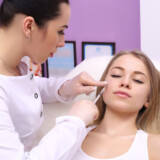
When Should One Get Botox? There will always be visible signs of aging in one’s body and appearance. This can be slowed or its appearance minimized with cosmetic treatments. Botox is one method that can be applied in this situation.
Getting Botox makes wrinkles and fine lines less obvious. This treatment can help people who desire to look younger and more refreshed. Botox can be a useful tool in your cosmetic arsenal if you’re just starting to notice the first signs of aging, or if you just want to keep your current look. However, knowing when to get Botox can be difficult because of the many factors to think about.
Botox: What Is It?
The cosmetic procedure “Botox” involves injecting botulinum toxin into the muscles that cause wrinkles and fine lines in order to temporarily paralyze them. A risk-free, natural method of improving your appearance and postponing the effects of aging. Wrinkles around the eyes, between the brows, and on the forehead are the most common areas to receive treatment, but it can also be applied to the neck and jaw.
A qualified medical professional using state-of-the-art equipment will inject tiny doses of Botox into the affected muscles. Botox can have a noticeable effect for months, and this effect can be easily kept up with touch-up treatments.

Botox temporarily paralyzes the muscles that create wrinkles and fine lines.
How Botulinum Toxin Works
A naturally occurring protein created by the bacterium Clostridium botulinum is known as botulinum toxin. Because of its role in triggering botulism, a form of food poisoning, it ranks among the most toxic substances ever discovered by humans.
Botulinum toxin, however, has been put to good use in the medical and cosmetic realms when administered in extremely minute doses. After being injected into the affected areas, it prevents the release of a chemical that tells the muscle to contract, temporarily paralyzing the area.
Wrinkles are diminished and a more youthful glow is restored to the skin as a result of this temporary paralysis. However, Botox injections should only be administered by a medical expert because doing so incorrectly can have serious consequences.
Now, let’s look at what you should think about to decide if you need Botox:
Age
Botox can be safely and effectively administered to people of any age, as the decision is based on their own preferences and individual situations. Most dermatologists say that Botox is only advised for those over the age of 18, as this is when wrinkles and fine lines begin to become more noticeable. Wrinkles and fine lines are a natural part of aging, but their appearance may be more pronounced in some people than in others and may occur at different times in their lives.
As a result, the ideal time to begin Botox treatment is when you first notice wrinkles and fine lines that you would like to minimize. Find out if Botox is safe and effective for you by consulting a doctor or cosmetic specialist.
Categories of Wrinkles
Botox is an effective treatment for wrinkles caused by muscle spasms, such as frown lines, crow’s feet, and forehead lines. Repetitive facial expressions lead to the formation of wrinkles known as “dynamic” wrinkles. Botox temporarily paralyzes the muscles that cause these wrinkles, giving the skin a smoother, younger appearance.
Muscle contractions can contribute to wrinkles, but this is not always the case. Wrinkles can be caused by both sun exposure and genetics.
Timing
The full effects of Botox usually appear within three to seven days, and they can last for up to four months. If you want the full effects of Botox, like a smoother, more youthful appearance, you should get your injections about four months before a big event like a wedding.
Botox injections are typically given every three to six months, though the frequency of treatment depends on the individual and the speed with which their muscles regain function.
This reminder that Botox is not a permanent anti-aging treatment and that its effects will wear off over time but with routine upkeep, Botox can be a long-term solution for lessening the visibility of wrinkles and fine lines.
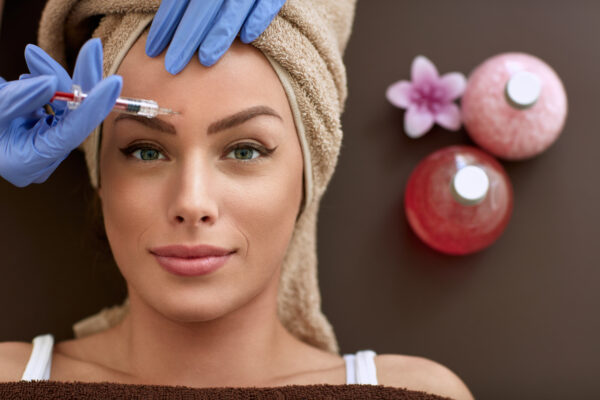
Injections of Botox should be timed strategically for the best result.
Cost
There are a number of variables that can affect the final price of Botox, including the experience and qualifications of the medical professional administering the injections as well as the total number of units needed. If the procedure is carried out by a reputable cosmetic specialist or in an area where the cost of living is high, the price may be considerably higher.
The number of units needed will vary depending on the person, the severity of their wrinkles, and the level of correction they want. It’s important to remember that although Botox can seem pricey, the effects can last for several months, making it a cost-effective solution to minimize the look of wrinkles and fine lines.
Medical Record
It is crucial to share your entire medical history with your doctor or cosmetic specialist before getting Botox, including all medications you are currently taking, any allergies you may have, and any preexisting medical conditions.
Patients with preexisting medical conditions, such as muscle or nerve disorders, are at a greater risk of experiencing unwanted effects from Botox. The risk of bleeding or bruising at the injection site can be further increased by some medications, such as blood thinners. Telling the truth about your health is crucial for determining if Botox is a viable treatment option for you.
Conclusion
Botox injections can make skin smoother and younger. The ideal time to begin Botox treatment can vary. Though this post may help you weigh your options, it’s still recommended that you talk to a specialist before deciding whether or not to get Botox. Botox, when used strategically and with care, can help you look younger and more refreshed for much longer.
There is currently Botox training available for medical professionals. Visit https://dentox.com/all-courses/ for online courses or https://dentox.com/live-courses/ for courses with live patients in person. Learn new skills to improve patients’ health, vision, and appearance.
An Attempt to Smuggle Botox was Intercepted at a Border Checkpoint
The incident took place toward the end of the year 2022 when law enforcement officers found 45 ampules of MasPort 500, also known as Botox, hidden in a bag with chocolates inside a woman’s suitcase. The bag was hidden inside another bag that contained chocolates.
When questioned, the woman claimed that she was taking the Botox with her on a two-week trip to Vienna for her own personal use.
According to the Head of SBA Customs in Dhekelia, her explanation sparked straight away suspicion in his offers.
He claimed that her explanation for why she needed so much Botox for just two weeks of vacation was not convincing. She said they were a gift from her boyfriend, and that she was 45 years old and planning to inject Botox all over her body.
The head of Turkish Customs said that fake goods were not excluded from the possibilities of what was being smuggled from the country’s controlled zones.
He went on to say that it is unusual for Botox to be found during border inspections and that the lack of authentic supporting documentation raises suspicions that the drug is fake.

The effects of fake Botox are extremely dangerous.
Fake Botox can have serious consequences, such as tissue death, facial paralysis, scarring, and allergic reactions. People who use it put themselves in danger when botulinum toxin is sold by unregulated vendors in other countries. Meanwhile, these numbers show that interest in Botox remains high in many nations.
There are notable distinctions between this and the cosmetic and medical uses of Botox. It is an injectable substance that has been given the green light by the medical community and can be legally purchased.
A compound fine was paid in place of prosecution, and all of the Botox vials were confiscated.
Injectables are widely used today, and this fact cannot be denied. Injectables are more likely to yield positive results if you follow the advice of a professional who can help you achieve a natural look rather than one that seems overdone.
To properly administer Botox as a medical professional, you must use only genuine Botox and have a thorough understanding of the human body. Doctors and estheticians can learn how to inject Botox safely, effectively, and with the least amount of waste through the Dentox training program. Please visit https://dentox.com/all-courses/botox-training/ and https://dentox.com/live-courses/ for online courses and live patient courses, respectively.
Should You Get Botox or Microneedling?

When people think of ways to improve their human appearance, Botox injections, and microneedling are frequently at the top of the list. Even though both treatments have the potential to make your skin look younger and smoother than it actually is, they do so in very different ways and come at very different prices. Botox, the original non-surgical facelift, is a well-known and popular choice among those looking to improve their appearance without undergoing surgery. Muscle contractions brought on by chemical nerve signals are blocked by Botox injections.
The wrinkle-causing facial muscles around the eyes and on the forehead will be temporarily frozen to prevent further wrinkle formation. Collagen induction treatment, or microneedling, is a non-surgical cosmetic procedure that involves making tiny punctures on the skin’s surface.
Microneedling treats minor skin issues
While microneedling can help you look younger to a certain extent, it is not a universal treatment for all facial aging symptoms. In other words, microneedling is an excellent choice for those who only care about enhancing their skin’s outward appearance and texture in a non-invasive manner.
While the results may not be as striking as those of Botox, they are undeniable. However, similar to Botox, regular clinic visits are required to sustain the effects. By injecting Botox into specific muscles, people can more precisely target problem areas like frown lines and crow’s feet around the mouth and on the forehead.
Botox works best on dynamic wrinkles
Two distinct categories of wrinkles exist: static and dynamic. Laughing, smiling, and squinting repeatedly cause dynamic wrinkles to form. The disintegration of collagen, elastin, and hyaluronic acid in the skin causes static wrinkles to become permanently etched into the skin over time. Excessive sun exposure and smoking are known to hasten this process.

Botox has treated dynamic wrinkles for years.
Botox has been used successfully for many years to treat dynamic wrinkles. To reduce the appearance of dynamic wrinkles, a neuromodulator called Botox is injected into certain facial muscles to temporarily paralyze them. Dermal filler injections, which typically consist of hyaluronic gel, are a more effective treatment for static wrinkles.
Botox injections produce more visible and rapid results
Because Botox injections are administered just under the skin’s surface, patients can anticipate an almost immediate smoothing of deep wrinkles and lines. Since microneedling works by stimulating the skin’s natural processes, it might take a little more time to see results, which might not be as dramatic as Botox. When you need to put your best face forward for an important event, Botox is your best bet.
It is my assumption that you will begin to see a reduction in the severity of your wrinkles within the first 24 to 48 hours following your Botox treatment, provided that you are a good candidate for the procedure and receive competent care throughout the process. The best possible outcomes should be visible in about two weeks. It’s also important to note that different people respond differently to Botox injections, which can be attributed to factors like the individual’s metabolism, the targeted area, and the injected volume. In order to get the most out of your treatment, it is important to talk to your doctor about what you hope to accomplish.

Metabolism, targeted location, and administered volume affect how people react to Botox injections.
Injecting Botox less frequently is possible
Microneedling may necessitate more frequent touch-ups in a shorter time frame, perhaps once every four to six weeks. If you want to get the most out of therapy, you should try to make it to at least four or six sessions. Alternatively, schedule your Botox injections less frequently if you find yourself too busy to visit the clinic. Botox’s beneficial effects can be expected to last for three to four months.
The results of Botox injectables typically last about three to four months, at which point a touch-up is necessary. However, because of individual variations in metabolic rate, some patients may require additional Botox injections sooner than others. The duration of your Botox injectables may be affected by how active you are. Botox injections may not last as long for athletes with a faster metabolism as they do for less active people.
Patients will benefit from your care if you have received the proper education. There is no longer any restriction on who can study to become a Botox or filler injector.
Please visit https://dentox.com/all-courses/botox-training/ and https://dentox.com/live-courses/ for online courses and live patient courses, respectively. Learning something new that will benefit your patients is a great way to help them feel and look better.
The Effects of too Much Botox on Your Body

Botulinum toxin, also known as Botox, is most frequently used to paralyze muscles for aesthetic reasons, though it can also be used for medical or cosmetic purposes. Instead of just those looking to reverse the effects of aging, what is known as preventative Botox is becoming more popular among younger people. The intended results, however, as well as your general appearance, can be impacted by using too much Botox or having it done incorrectly.

Finding the optimal dosage of Botox for your treatments is essential.
If you’re considering getting Botox, you might be wondering how much is too much and how to tell if you have too much of it already. It may sound subjective, but a natural-looking appearance after Botox is what is desired. Fortunately, there are numerous resources to help you determine if you’ve had too much Botox injected, and we’ve compiled the most common symptoms.
The most stereotypical symptom is a frozen appearance
To begin, let’s look at what is arguably the most iconic symptom of Botox overuse. As a result, your facial muscles are either completely or seemingly frozen. This can look slightly different depending on the area of the face where the Botox was injected, such as the brows or the neck. In most cases, you should be concerned if the treatment causes a change in your facial expression that goes beyond what was intended.
An unnatural appearance at rest or in motion is the hallmark of botched Botox. It’s important to check if the cheeks and brows still rise normally when smiling and when raising the brows actively.
A sudden asymmetry has appeared on your face
If your facial asymmetry is new and wasn’t there before, that is another indication that you have had too much Botox. It’s the provider’s fault, not the patient’s, in most cases.
Fortunately, this is a problem that can be easily remedied with botulinum toxin, which, contrary to popular belief, does not cause muscle tightening but rather stops or limits muscle contraction. If, after injection, the muscle continues to contract, raising the eyebrow on the stronger side, further injection into that muscle will weaken it, allowing the brow to descend and restore facial symmetry.
Your eyebrows are Spock-like
Too much Botox can cause a condition known as “Spock brows,” so named after the Vulcan character on “Star Trek” who is known for having exceptionally prominent brows.
It’s not just Botox that can cause the unflattering overarched look known as “Spock brows;” permanent makeup tattooed on the eyebrows, for example, can have the same effect.
“Spock brow” is not a problem that can be corrected immediately after injection; patients must wait approximately two weeks after their injections to undergo corrections.
One or both of your eyelids are drooping
A droopy eyelid or eyelids, also referred to as “ptosis,” are another indication that you have had too much Botox. This happens when the Botox moves from its original injection site. Injecting near the orbital bone directly above the pupil is dangerous and should be avoided at all costs. This can also occur if you touch the injection site too soon after receiving treatment, so keep your hands away from your face.
Ptosis cannot be instantly remedied as the Spock brow can. One of the less desirable potential outcomes of cosmetic Botox is drooping, which can persist for months.
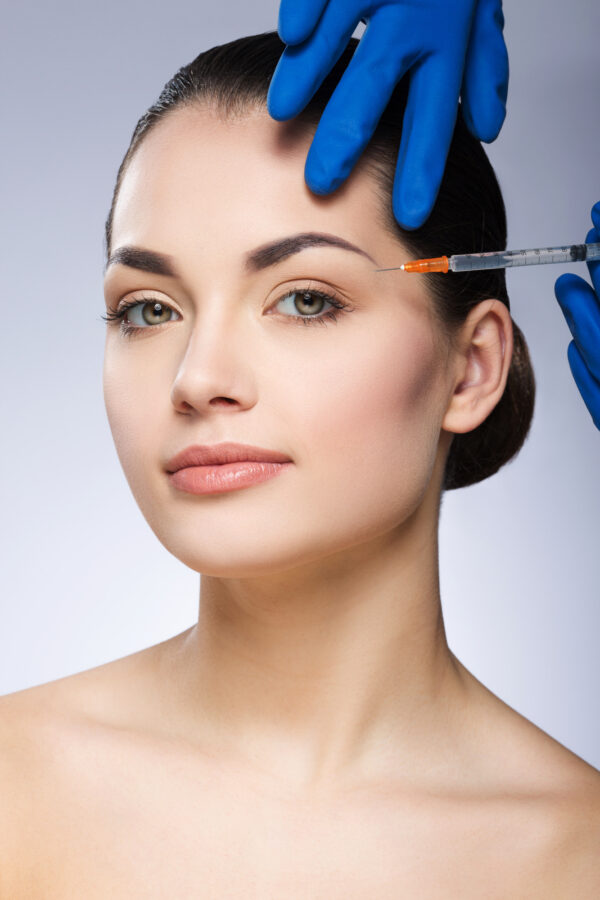
The eyelid is the most visible and vital facial feature to treat.
Overall, you’re not happy with the results
Finally, trust your instincts when it comes to your health and appearance. Since you went to the provider and paid money to have a certain effect achieved, they should be able to tell you how the amount of Botox used and where it was injected will affect your appearance in the near and distant future.
Unexpectedly, patients who receive cosmetic Botox treatment may experience side effects from too little Botox applied to that area of their faces. Most people believe they have too much Botox when they actually have too little in a particular area.
If doctors and other medical professionals have the appropriate training, they can help their patients. There is now an opportunity for providers to learn how to inject Botox and fillers properly. For online courses, please visit https://dentox.com/all-courses/botox-training/, and for live patient ones, please visit https://dentox.com/live-courses/. Learning new skills can have a significant impact on the lives of your patients and help them look, feel, and see their best.
Botox as a Potential Migraine Therapy

The use of Botox to treat migraines has recently been hailed as a potentially life-changing development for many who suffer from this disabling ailment. It can be challenging to go about daily life when pain, sensitivity to light and sound, and other symptoms are so intense.
Botox, among other treatments, has been shown to be beneficial in lowering migraine frequency and intensity. The effectiveness of Botox for headaches, as well as any potential side effects and before/after photographs, will be discussed in this article.
Botox and Migraine: A Picture of Comprehension
Botox, or Clostridium botulinum toxin, is a bacterially-derived neurotoxin. Although this may put you on edge, know that Botox is safe and effective in low doses for treating a number of medical issues, including migraines.
Botox is injected into the forehead, temple, and back of the head muscles since these are the areas most affected by acute pain. Injections are administered at regular intervals of 12 weeks, and it may require multiple treatments to achieve the desired effect.
Botox’s Efficiency in Treating Migraines
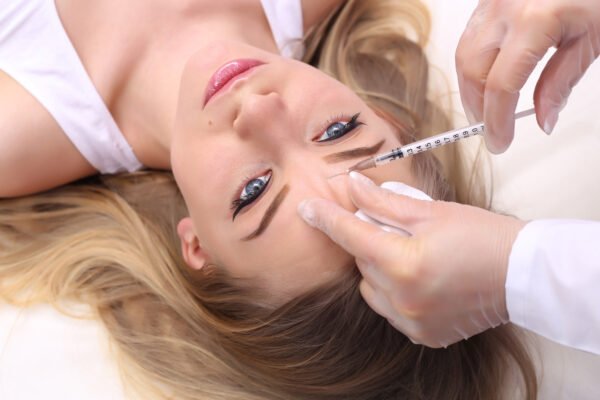
The use of Botox to treat migraines shows great promise.
According to the American Migraine Foundation, Botox injections are a form of FDA-approved therapy for those who experience chronic migraines, which are characterized as 15 or more headache days per month.
The effectiveness of Botox in treating migraines has been demonstrated in clinical trials, with patients reporting a decrease in both migraine frequency and severity as well as an improvement in their quality of life. While Botox is a highly successful treatment, it may take multiple injections (at regular intervals of around a month) before the full benefits become apparent.
Before and after botox treatment for migraines
Want to know more about Botox and how it could help with migraines? It may be easier to imagine the outcome of this procedure if before and after photos are available.
Botox patients in one research noticed a substantial reduction in monthly headache occurrences, from an average of 20.6 to 9.2. This is a major enhancement that has the potential to significantly better the patient’s quality of life. Seventy percent of patients also reported marked improvements in their general well-being, with benefits including less impairment and fewer lost working days.
Also, patients seeking cosmetic improvements may learn of an additional benefit from Botox by comparing their pre- and post-treatment appearances. A more youthful appearance can be achieved by using Botox injections to reduce the appearance of wrinkles and fine lines.
Always keep in mind that your experience with Botox may differ from others if you decide to get it done. Still, before and after photos can show you the results to expect and help you decide if it’s the best option.
Botox’s Potentially Harmful Effects on Migraine Sufferers
Although Botox is generally regarded as harmless, it is essential to be conscious of possible side effects before deciding to use it as a treatment for migraines.
Some of the most commonly reported Botox side effects are a pain in the head, neck, or muscles as well as flu-like symptoms. Another potential side effect is an allergic reaction, localized swelling, or bruising at the injection site.
Botox should only be considered as a treatment option after carefully discussing the pros and cons with a qualified medical professional. While some unwanted effects may be minor and short-lived, others may be serious and call for medical attention. Bear in mind that Botox is a medical procedure and should only be performed by a doctor or other qualified medical professional.
The use of Botox to treat migraines has shown positive results, including a decrease in headache frequency and intensity and an increase in patients’ reported life satisfaction.
Those who suffer from chronic migraines may find that the benefits of Botox outweigh the risks, although it is important to keep in mind that these side effects are possible. Even though seeing before and after pictures can give you an idea of what to expect from this treatment, it is still important to have an open dialogue with your doctor about the potential risks and rewards.
If you’re thinking about getting Botox, it’s crucial that you find a trained professional to administer the injections. Botox, when administered properly, has the potential to alleviate the suffering associated with chronic migraines and boost health. Dentox is a program designed to educate medical professionals and aestheticians on the proper and most efficient methods for administering Botox injections. Visit https://dentox.com/all-courses/botox-training/ for online options, and https://dentox.com/live-courses/ for in-person instruction with actual patients.
Is it true that undergoing cosmetic surgery could have negative effects on one’s mental health?


The danger of body dysmorphic disorder can make people more anxious about their perceived flaws.
It is difficult to determine how many Australians have had cosmetic surgery because doctors are not required to report such data. In fact, the demand for such treatments is growing.
A 2015 study found that Australians spent over $1 billion annually on non-surgical cosmetic procedures like Botox and fillers. When compared to the United States, this is over 40% higher per capita.
There was a 42% year-over-year increase in the number of filler procedures and a 40% year-over-year increase in the number of Botox procedures in the United States, where such data is tracked and reported.
Although there may be a higher incidence of mental health problems in the population, it appears that not enough is being done to protect the mental health of those who seek cosmetic treatments.
Body Dysmorphic Disorder
The majority of people who seek out cosmetic procedures do so because they are dissatisfied with how they look. This concern is primarily focused on the nose, which will be changed by rhinoplasty cosmetic surgery.
A person with body dysmorphic disorder may become fixated on one or more flaws in their physical appearance, even if these flaws are not noticeable to others or are seen as unimportant by them. A person with body dysmorphic disorder will engage in ritualistic behaviors like excessively checking body parts in the mirror and mental acts like comparing their appearance to that of other people. It can increase anxiety related to the perceived flaw.
Some people are unable to go to work or even eat dinner with their families because they are embarrassed about their appearance in public.
It makes sense that someone with body dysmorphic disorder would be more likely to seek help at a cosmetic clinic than a mental health facility, since the distress associated with the disorder appears to stem from issues with physical appearance.
When a patient with body dysmorphic disorder is unhappy with the results of their cosmetic procedure, they are more likely to sue the doctor who performed the procedure.
What about other conditions of mental health?
Despite the fact that research on body dysmorphic disorder is extensive, it is not the only mental health condition that may be linked to less favorable results from cosmetic procedures.
People who are interested in cosmetic surgery may have higher than average rates of depression (5% to 26%), anxiety (11% to 22%), and personality disorders (0% to 53%), according to a survey.
These numbers need to be interpreted with caution because they vary considerably depending on whether the diagnosis was made through a clinician-led interview at higher rates or a mental health questionnaire at lower rates. Some interview methods may be quite unstructured, leading to doubts about their validity in comparison to highly structured questionnaires. These methods may imply higher rates of mental health issues.
Beyond body dysmorphic disorder, there are few studies that examine mental health problems. This may be due to the fact that, unlike other types of psychiatric disorders, body dysmorphic disorder has a central focus on body image, making it a logical focus for cosmetic surgery research.
The question then becomes, “What ought to occur?”
Every cosmetic surgeon and practitioner should have sufficient training to perform a standard, quick evaluation of every prospective patient. Those who display symptoms indicating that they will not benefit psychologically will not receive treatment. The procedure should be given a more thorough evaluation by a mental health professional before deciding whether or not to go through with it.
This may involve a comprehensive clinical interview regarding the patient’s motivations for the procedure and the completion of a number of standard mental health questionnaires.
even if mental health professionals determined that patients did. In fact, problems during the evaluation did not guarantee that they would advise against going ahead with the procedure. They might suggest psychotherapy to address the underlying issues before suggesting cosmetic surgery.
Since patients seeking cosmetic services often do so for psychological rather than physical reasons, practitioners in this field have an ethical and legal obligation to put their patients’ well-being first. Patient satisfaction could be improved with any type of cosmetic procedure by requiring evaluations of all prospective patients.
The risks associated with cosmetic surgery cause many people to favor non-invasive techniques. A program called Dentox teaches physicians and estheticians the ins and outs of Botox injections.
There are a variety of seminar locations across the United States, and you can sign up for a seminar online, on-demand, or in person. Please visit https://dentox.com/all-courses/ for information on our online offerings, and https://dentox.com/live-courses/ to learn more about our in-person options.
Is there a correlation between cosmetic procedures and mental health?

Cosmetic surgery became more prevalent, with numerous body trends and technological advancements influencing the most popular procedures. Since then, millions of treatments have been carried out.
The decision to undergo cosmetic surgery has received a lot of attention lately. Therefore, it is crucial for psychologists to discuss with patients the psychological effects of cosmetic surgery and what may increase or decrease their willingness to have it done.
Although it appears that not enough is being done to ensure the psychological security of those undergoing aesthetic procedures, it is possible that this causes mental health issues in the patients.

The primary reason people seek cosmetic procedures is typically body image issues.
Body Dysmorphia
Body image issues are typically the main driving force behind seeking out any type of cosmetic procedure. Typically, these concerns are centered on the targeted body part, such as the nose in the case of rhinoplasty.
Numerous mental health conditions are characterized by severe body image issues. Body dysmorphic disorder is the most frequent reason for seeking cosmetic procedures. Body dysmorphic disorder affects 1-3% of the general population, but 16–23% of those who seek cosmetic surgery suffer from it.
Involvement in body dysmorphic disorder includes preoccupation or obsession with one or more perceived physical flaws that are not obvious to others or appear to be minor. The person with body dysmorphic disorder will engage in repetitive behaviors and thoughts in response to their distress over the flaw.
Some people with these worries are unable to go so far as to eat dinner with their families out of fear of being seen.
Since the emotional pain of body dysmorphic disorder appears to stem from concerns about outward appearance, it stands to reason that people with this condition are more likely to seek help at a cosmetic clinic than a mental health facility.
When people with body dysmorphic disorder undergo cosmetic surgery, they often report feeling the same or worse afterward. They might worry more about the perceived flaw, leading them to seek additional cosmetic procedures.
Body dysmorphic disorder patients are more likely to sue their cosmetic surgeon if they are unhappy with the results of their procedure.
Due to these factors, health professionals generally consider body dysmorphic disorder to be a “red flag” or contraindication for cosmetic procedures.
Still, there are some gray areas here. According to a number of studies, people with body dysmorphic disorder can lessen their symptoms after receiving a cosmetic intervention, but the obsession may simply shift to a different body part; the diagnosis of body dysmorphic disorder remains.
What about others with mental illnesses?
There is a lot of further research on body dysmorphic disorder, but it’s not the only mental illness that could lead to unfavorable outcomes after cosmetic surgery.
Although researchers have focused extensively on body dysmorphic disorder, they have paid less attention to other mental health conditions. The fact that body image is central to body dysmorphic disorder may explain why it has received more attention in the field of cosmetic surgery than other psychiatric disorders.

Researchers have focused on body dysmorphic disorder and overlooked other mental health disorders.
So, what should occur?
All cosmetic surgeons and practitioners should, ideally, have enough training to perform a quick routine assessment of every potential patient. Those who show signs that they are unlikely to benefit psychologically from the procedure should be further evaluated by a mental health professional before having it done.
This could involve a comprehensive clinical interview regarding the motivations for the procedure and the completion of a range of standard mental health questionnaires.
If a person is discovered to have a mental health problem during the assessment process, the mental health professional may still advise against moving forward with the procedure. They might recommend getting psychotherapy to deal with the problem before having the cosmetic procedure.
Assessments are currently advised but not required prior to undergoing cosmetic surgery. There should be an evaluation if there are signs that the patient has significant underlying psychological issues.
This means that we’re depending on the cosmetic doctor to be able to identify these problems, even though they may have received only rudimentary psychological training in medical school and even though their practice might benefit from ignoring such diagnoses.
Ultimately, because they are treating patients who are seeking care for psychological as opposed to medical reasons, cosmetic practitioners must put the patient’s welfare first in order to maintain their professional integrity and defend themselves against legal action. Patient satisfaction could probably be increased with a mandatory evaluation for all patients seeking cosmetic procedures.
Patients looking for the best options in beauty may be satisfied by comprehensive training for cosmetic professionals. It can be gained in Dentox: Botox training and dermal filler courses. New techniques for administering Botox and fillers are covered in this course. In Dentox, the students have a number of ways to learn, such as in-person, online, and on-demand lessons. Visit https://dentox.com/all-courses/botox-training/ to access online courses, and https://dentox.com/live-courses/ to access live courses with real patients.
Mesotherapy: A Quick Look
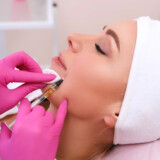
The term “mesotherapy” has likely been bandied about for the past year. Mesotherapy training typically entails learning how to inject a specific substance beneath the skin. The sense will spread throughout the patient’s body.
The skin around the injection site will tighten and feel heavier than the skin elsewhere in the patient. When the substance is properly administered and absorbed by the skin, patients will feel its effects.
Learn about mesotherapy if you want to be an expert in the field of medical aesthetics. This guide will familiarise you with the information regarding mesotherapy.
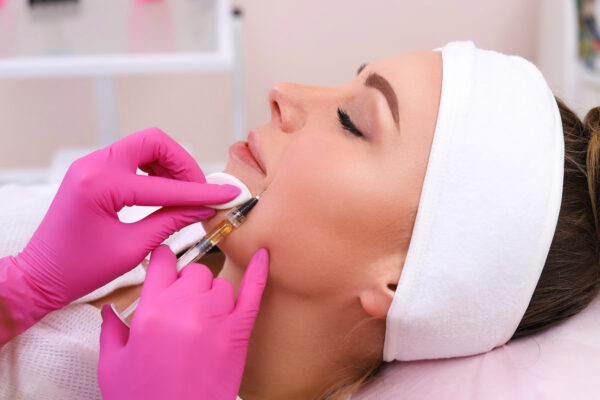
A woman gets an injection in her face.
Mesotherapy Training Entailment
Training in mesotherapy equips practitioners with the knowledge and skills necessary to provide care to patients. It covers every step of the process, from setting up the environment to giving out medication.
Expert clinical educators and trainers are here to address any concerns you may have. Additional guidance is offered as well.
Each manual for this treatment method demonstrates competence with the necessary apparatus and the ability to monitor the patient’s response. After finishing the program, certification is given so that practice can begin.
Explanation of Mesotherapy Treatment Variants
Mesotherapy has become increasingly popular in the realm of aesthetic medicine. In the field of mesotherapy, various training systems are available, including dermapen, deep mesotherapy, and bio-revitalization.
Dermapen
It is a well-liked cosmetic option for enhancing the appearance of skin. The treatment aids in the reduction of fine lines and wrinkles, the plumping of the lips, the contouring of the cheeks and jawline, and the treatment of acne.
This technique employs microneedles to inject a serum containing amino acids, minerals, and other active ingredients into the skin. This serum boosts collagen synthesis, which contributes to firmer, younger-looking skin.
The controlled depth of the needle treatment assists in delivering the serum to the appropriate skin depth. It is suitable for all skin types and yields rapid, effective results.
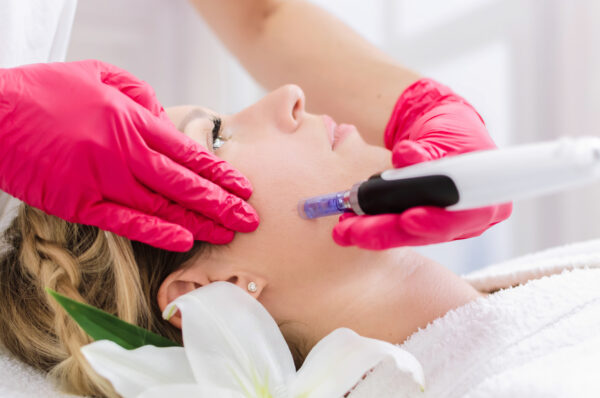
Dermapen is a device that uses tiny needles to inject a serum into the skin.
Deep Mesotherapy
Deep mesotherapy is an injection therapy used to reduce fat and cellulite without surgery. The injections cause fat to be released from the treatment area. It is the process of administering small doses of pharmaceuticals, vitamins, etc. to a specific area.
Additionally, it encourages collagen production, which helps to firm and smooth the skin. Repeated attempts at the procedure may be necessary to achieve the desired results.
Bio-Revitalization
The skin is injected with natural, active components. This method is non-invasive and no special preparation is required.
The procedure takes very little time and requires no more than a local anesthetic. The appearance of fine lines and wrinkles is diminished, and the skin’s elasticity, moisture, and tone are all enhanced. Time increases the visibility of benefits and results.
The Role of Mesotherapy in Medicine
Although it was first proposed in 1952, the concept of mesotherapy has only recently begun to gain traction. Medication, vitamins, minerals, and amino acids are all part of this process. It helps with things like thinning hair, cellulite, extra fat in specific areas, and wrinkles.
The first visible results usually appear within four weeks, and they can last for as long as six months. Mesotherapy can restore the health and youthfulness of the skin, depending on the source.
Have the Best Training Ahead
Mesotherapy training is a fascinating and challenging endeavor. It’s beneficial for both one’s physical and mental health. Those who are interested should think about getting trained and seeing how it can improve their lives.
Besides the thing above, learn some techniques in Botox and dermal fillers to make your patients feel and look their best so they can live happier and healthier lives. Having the skills and knowledge you’ve gained through training will be beneficial to your patients. To learn more about online courses and in-person patient training events, please visit https://dentox.com/live-courses/ and https://dentox.com/botox-training/.
The Australian Dental Board’s Stance on Botox


The most recent statement from the Dental Board of Australia has been made public, and the board has used this opportunity to remind dentists and other practitioners of its interim policy on the use of Botox and other botulinum toxins. The Board’s interim policy on the use of botulinum toxin and the accompanying information sheet on the responsibilities of dentists while employing botulinum toxin (BTX) and dermal fillers have been deleted from the website while the review is ongoing, as stated in the communiqué. In addition, the communique notes that the Board is continuing to review dentists’ responsibilities regarding the use of Botulinum toxin (BTX) and dermal fillers.
According to the communiqué, The Board has withdrawn the documents knowing that the public remains protected by the Board’s current regulatory policies including the Scope of practice registration standard and accompanying regulations.
Dentists who use substances in their practice such as botulinum toxin and dermal fillers are required to do so while taking into consideration the standards of the Board and any other regulatory authorities that may be applicable. In the majority of jurisdictions, the law stipulates that prescribing may only be done for dental treatment. Dentists and other specialists, in particular, have a duty to verify that they have received training and education in the appropriate use of these agents, that they are capable of making appropriate use of the agents, and that there is written consent regarding both financial matters and informed medical decisions.
To become a registered dentist, one must complete an approved educational program, which the Board recognizes as providing the essential knowledge base for all dentists. This is true for both general and specialty dentists. Expertise in the prescription and administration of Scheduled Medicines can be maintained by ongoing training and study in the use of facial injectables. Continuing one’s education and training in one’s profession is one way to achieve this goal.
As of right now, dental prosthetists, dental hygienists, dental therapists, and oral health therapists do not have any training that is deemed appropriate for the use of botulinum toxin or dermal fillers. This is because these dentists operate outside of areas that allow the use of these medications due to the rules controlling medicines and poisons. Dermal fillers and botulinum toxin are not often part of these doctors’ scope of practice, thus their usage would be problematic.
In several stages of this review, the Therapeutic Goods Administration (TGA) was consulted for advice. As a division of Australia’s Department of Health and Ageing, the Therapeutic Goods Administration (TGA) is in charge of ensuring the safety and efficacy of therapeutic items such as drugs, medical equipment, biologicals, and even blood and blood products.
The Australian Register of Therapeutic Goods is where you can find all of the approved indications that have been made public by the Therapeutic Goods Administration. Healthcare providers’ use of scheduled drugs for unapproved uses is not something the TGA monitors or controls (i.e., the indications for which they are listed in the Australian Register of Therapeutic Goods). Practitioners of medicine should handle this.
A medication’s “off-label” use occurs when it is administered for a condition that is not listed in the product’s official indications for distribution. Because the TGA does not evaluate ‘off-label’ applications, those uses are classed as experimental for that reason.
Dentist who uses botulinum toxin in their practice ought to be knowledgeable about the permitted indications of the scheduled drug they are administering. For instance, treating temporomandibular joint issues or dysfunction with botulinum toxin is considered “off-label” usage.
If a dentist is going to use a scheduled drug “off-label,” it is a clinical decision that has to be discussed with the patient.





